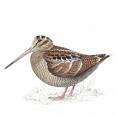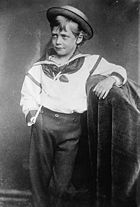This is John Betjeman’s poem about Matlock Bath (illustrated with a few snaps). I had forgotten about the poem when I visited, otherwise I would have tried to get one of the Methodist Church that features in it.
Betjeman knew of Matlock Bath because of his liaison with Lady Elizabeth “Feeble” Cavendish, whose brother owned nearby Chatsworth House. One might have expected Betjeman to have written something slightly jollier about such a jolly place, but this is very bleak. Perhaps he should have visited while the illuminations were still on.
.
Matlock Bath
From Matlock Bath’s half-timbered station

I see the black dissenting spire—,
Thin witness of a congregation,
Stone emblem of a Handel choir;
In blest Bethesda’s limpid pool,
Comes treacling out of Sunday School.
By cool Siloam’s shady rill–
The sounds are sweet as strawberry jam:
I raise mine eyes unto the hill,
The beetling HEIGHTS OF ABRAHAM;
The branchy trees are white with rime
In Matlock Bath this winter-time.
And from the whiteness, grey uprearing,
Huge cliffs hang sunless ere they fall,
A tossed and stoney ocean nearing
The moment to o’erwhelm us all:
Eternal Father, strong to save,
How long wilt thou suspend the wave?
How long before the pleasant acres,
Of intersecting LOVERS’ WALKS

A Lovers' Walk
Are rolled across by limestone breakers,
Whole woodlands snapp’d like cabbage stalks?
O God, our help in ages past,
How long will SPEEDWELL CAVERN last?
In this dark dale I hear the thunder
Of houses folding with the shocks,
The GRAND PAVILION

The Grand Pavilion - largely obscured by the Riverside Fish 'n' Chip Restaurant
buckling under
The weight of the ROMANTIC ROCKS,
The hardest Blue John ash-trays seem
To melt away in thermal steam.
Deep in their Nonconformist setting
The shivering children wait their doom–
The father’s whip, the mother’s petting
In many a coffee-coloured room;
And attic bedrooms shriek with fright,
For dread of Pilgrims of the Night.
Perhaps it’s this that makes me shiver
As I ascend the slippery path

The View from half way up the Heights
High, high above the sliding river
And terraces of Matlock Bath;
A sense of doom, a dread to see
The Rock of Ages cleft for me.
Though the town has so far not suffered the apocalyptic collapse foreseen by Betjeman, the Methodist Church closed in 1974 and was turned into a furniture store and the Grand Pavilion has recently been deemed “surplus to requirements” by the local council.









